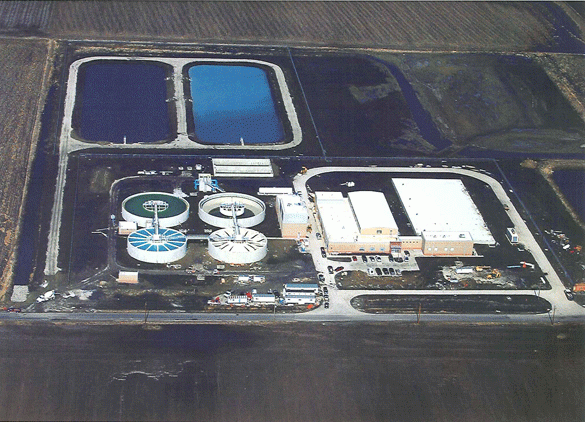Disinfection By-Products Study for New York City Water System
When it came time to comply with the Stage 2 Disinfection/Disinfectant By-Products Rule, the New York City (NYC) Department of Environmental Protection retained Hazen and Sawyer (in Joint Venture) to undertake a $1.8 million study to help the City determine the best course of action for compliance.
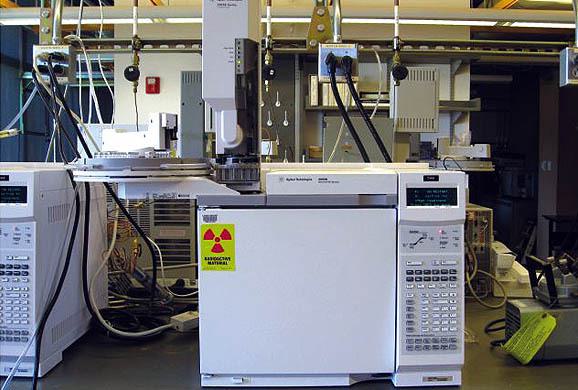
Gas Chromatograph with Electron Capture. This equipment was used at the UMASS laboratory to analyze chlorine and chloramine disinfection by-products formed in a simulated distribution system, similar to that of New York City.
DBPs are generated from the reaction between chlorine (which is typically used as a disinfectant) and naturally-occurring organic matter in the water supply. DBPs have been found to be carcinogenic, and full compliance with the new standards is required to protect public health. In recent years, some water purveyors have adopted chloramination (the use of chlorine and ammonia) as the preferred method of disinfection, since it results in lower DBP formation than the use of chlorine alone.
However, switching to chloramination can result in several “unintended consequences” including nitrification, increases in lead levels, and the formation of more toxic nitrogenated DBPs. In order to address these and other unintended consequences, Hazen and Sawyer conducted an in-depth evaluation of the feasibility of switching to chloramination and of alternative DBP compliance options including treatment changes and optimization of source water withdrawal and distribution system operations.

Bill Becker is a nationally respected water supply and treatment expert.
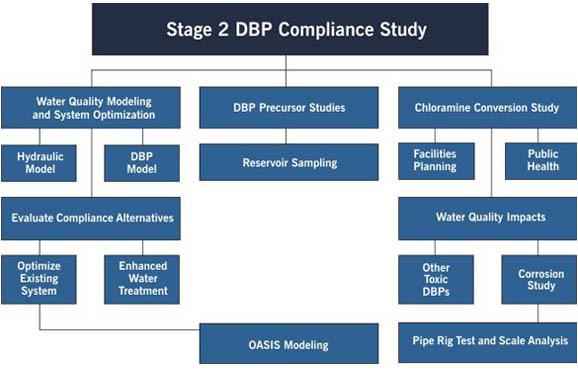
Stage 2 DBP Rule Compliance Study Schematic. The compliance study involved many complex interrelated components, including modeling, reservoir sampling, and determining water quality impacts.
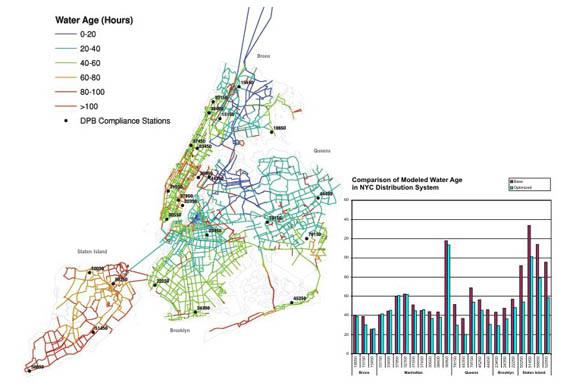
Study Objectives
1. Assess the source and fate of DBPs in the New York City water supply system:
- Develop NYC-specific THM and HAA formation models
- Predict THM and HAA levels at various locations in the distribution system for under various current and future scenarios
2. Assess compliance options for meeting the Stage 2 D/DBP regulations:
- Treatment options: Filtration, MIEX, membranes
- Optimization options: reducing chlorine dose, altering travel times, altering reservoir operations
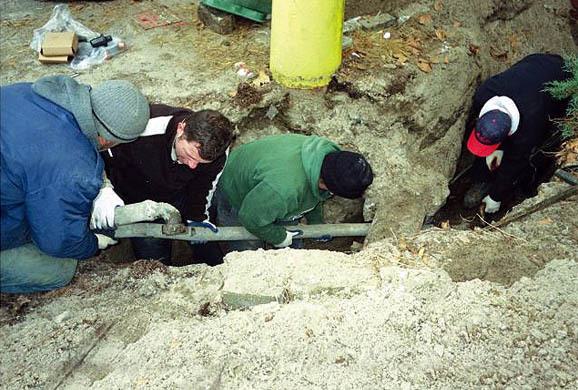
3. Conduct a comprehensive feasibility study that examined the advantages, disadvantages and costs of switching New York City’s secondary disinfectant to chloramines:
- Survey of other systems that use chloramines
- Development of chloramination design criteria
- Evaluation of the impact of switching to chloramines on lead and copper corrosion
- Evaluation of the potential to form nitrogenated disinfectant byproducts
- Evaluation of operational, environmental and security concerns surrounding a disinfectant change
The DBP prediction model was used to predict THM and HAA levels throughout the New York City distribution system under a variety of scenarios. The model was used to evaluate the effect of lowering chlorine dose, using water from higher quality reservoirs, and implementing treatment such as filtration or MIEX. Promising results are anticipated for lowering chlorine dose once the NYC’s new UV disinfection facility comes online and for modifying reservoir operations. Modifying reservoir operations means withdrawing water from reservoirs with lower levels of DBP precursors when possible while meeting other system objectives such as preventing droughts. These two options, lowering chorine dose once UV is online and modifying source water reservoir operations, are expected to lower DBP levels by up to 20 % - enough to safely comply with the new regulations.
Based on the results of the study, it was determined that making certain operational changes to the NYC’s water system, from both a supply and distribution standpoint, would be the best approach to complying with the new regulations, especially when compared to other DBP control options that would require expensive major infrastructure changes. It was also determined that although switching to chloramines would likely not cause unintended adverse consequences in the distribution system, such a switch is not necessary to meet the new Stage 2 D/DBP regulations. These findings will prevent NYC from having to allocate funds to construct new chloramination and associated facilities.
Project Outcomes and Benefits
- Concluded that switching to chloramination or other chemical treatment methods would not be necessary for compliance, eliminating the need to construct costly new facilities.
- Found that operational changes to the NYC water system would most likely satisfy the D/DBP Rule, with minimal expenditure of funds.









